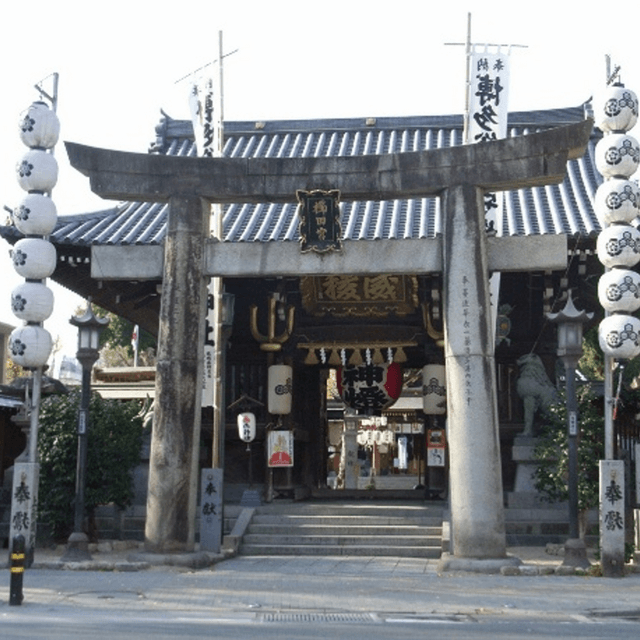
祭神は大幡主命(おおはたぬしのみこと)、天照大神(あまてらすおおみかみ)、素戔嗚尊(すさのおのみこと)。天平宝字(てんぴょうほうじ)元(757)年の創建と伝えられています。平清盛(たいらのきよもり)が博多を日宋貿易の拠点港とした平安末期に、平家の所領肥前国神埼荘の櫛田神社を勧進したものと伝えられています。
博多の総鎮守として、「お櫛田さん」の愛称で市民から親しまれています。特に7月1日から15日にかけて行われ、当社に奉納される博多祇園山笠行事(国指定重要無形民俗文化財)は博多の夏の風物詩として有名です。境内には樹齢約1000年とされる「櫛田の銀杏」(県指定天然記念物)が葉を繁らせ、その下には蒙古襲来時に元軍の船に使用されていたと伝えられる蒙古碇石(もうこいかりいし)(県指定有形文化財)が2点あるなど、博多の長い歴史を物語る場所となっています。
【参拝時間(本殿)】4:00~22:00
Kushida Shrine houses the deities Ohatanushi-no-Mikoto, Amaterasu Ōmikami, and Susanoo-no-Mikoto, and is said to have been founded in 757 (Tenpyō Hōji 1). In the late Heian period, when Taira no Kiyomori made Hakata a key port for trade between Japan and China's Song dynasty, it is said that the Kushida Shrine of Kanzaki-no-shō in Hizen Province was solicited here under his sponsorship.
As the grand tutelary shrine of Hakata, it is affectionately known to citizens as “Okushida-san.” Especially famous as a symbol of Hakata’s summer is the Hakata Gion Yamakasa festival—held from July 1 to 15 and dedicated to this shrine—which is designated by the national government as an Important Intangible Folk Cultural Property. In the precincts, the “Kushida Ginkgo,” believed to be about 1,000 years old (a Prefectural Natural Monument), spreads its leaves, and beneath it are two “Mōko ikari-ishi” (Mongol stone anchors), said to have been used on Yuan warships during the Mongol invasions (Prefectural Tangible Cultural Properties), making this a place that tells the long history of Hakata.
Worship hours (Main Sanctuary): 4:00 a.m. to 10:00 p.m.
スタンプを獲得すると、限定の壁紙をゲットできます。
スタンプを集めてね / Collect a stamp
限定の壁紙を獲得しました。
以下のボタンから壁紙を表示し、長押しで”写真”に保存してください。
